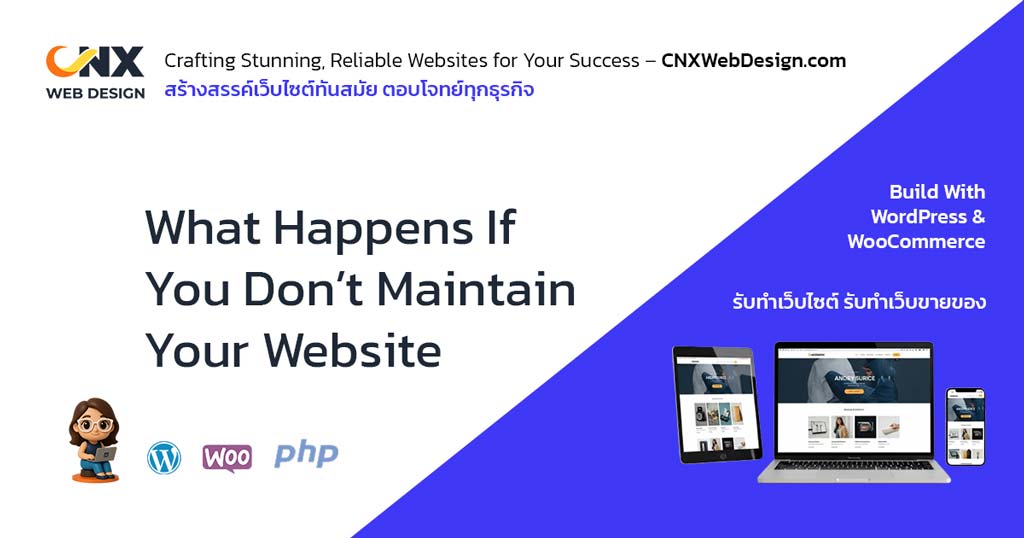Your WordPress website isn’t a “set and forget” tool. It’s a living system that needs regular care. Ignoring updates, backups, and performance checks might not cause immediate issues, but over time, neglect can lead to security breaches, poor performance, and loss of traffic or sales.
Key Takeaways
- Security: Unmaintained WordPress sites are prime targets for hackers.
- Performance: Old plugins and data slow down your site and hurt SEO.
- SEO: Regular updates and speed optimization improve rankings.
- Data Safety: Backups protect you from crashes or hacks.
- Cost Efficiency: Preventive maintenance is cheaper than repairs.
Your Site Becomes Vulnerable to Hacking
WordPress powers over 40% of all websites, making it a prime target for hackers. Outdated plugins, themes, or WordPress core files often contain known vulnerabilities.
Risks include:
- Malware infections and spam redirects
- Website downtime or defacement
- Data breaches and lost customer trust
- Google blacklisting or host suspension
Regular updates and security monitoring help close these vulnerabilities before attackers find them.
Outdated Plugins Can Break Your Site
Plugins add features, but they also depend on compatibility with the latest WordPress and PHP versions. Ignoring updates can cause:
- Broken forms, checkout pages, or menus
- Conflicts between plugins
- Site errors or white screens
Always back up your site before updating. This ensures you can restore it safely if something fails.
Slow Loading and Poor Performance
A neglected WordPress site tends to accumulate unnecessary data: post revisions, spam comments, and outdated plugin files. This can make your site load slowly.
Search engines and users both expect speed. Cleaning up your database, optimizing images, and using caching plugins (like WP Rocket or W3 Total Cache) can help your site stay fast and responsive.
SEO Rankings Will Drop
Outdated sites send negative signals to Google. Slow performance, broken links, missing metadata, and unsecured connections (HTTP instead of HTTPS) all hurt your rankings.
Use SEO plugins like Yoast SEO or Rank Math to manage your metadata, fix broken links, and keep your sitemap up to date. Maintenance directly impacts how search engines perceive your site’s quality and authority.
Design and Functionality May Break
Themes and page builders like Elementor, Divi, or the Block editor release frequent updates for performance and security. If you don’t update them, you may find that layouts break or stop rendering properly—especially on mobile devices.
Regular updates and testing after changes ensure your design remains consistent and user-friendly.
You Risk Losing Data
Without automated backups, one plugin conflict or malware attack can wipe your entire website. Backup tools like UpdraftPlus, Jetpack Backup, or BlogVault make it easy to store copies of your site on cloud services such as Google Drive or Amazon S3.
Set backups to run daily or weekly and verify that they’re working.
Neglect Leads to Higher Costs
Emergency repairs, malware removal, or full-site rebuilds cost far more than routine maintenance. Preventive care is always cheaper and more reliable than recovery. Consistent updates, security scans, and monitoring keep your website, and business safe.
Final Thoughts
Your WordPress website is one of your most valuable business assets. Treat it like one. Schedule regular maintenance: updates, backups, and optimization to ensure your site stays secure, fast, and profitable.
If you don’t have the time or technical knowledge, hiring a WordPress maintenance expert is the best long-term investment. It keeps your site healthy while you focus on growing your business.


